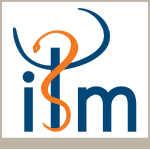
|
Le trouble du Spectre de l’Autisme est défini comme étant un trouble neuro-développemental touchant les aspects d’interaction sociale, de communication sociale avec autrui ainsi que par la présence de troubles du comportement sensoriel, des intérêts restreints et répétitifs. La recherche dans ce domaine ne cesse de se développer touchant les secteurs des conceptions neurobiologiques ainsi que les recherches en intervention. Cette unité d’enseignement se propose de présenter les dernières avancées de la recherche en autisme et d’exposer l’évolution des conceptions en vue de mieux identifier les stratégies d’intervention efficaces en tenant compte de la singularité de chaque enfant.
Temps présentiel : 15 heures
Charge de travail étudiant : 50 heures
Méthode(s) d'évaluation : Examen final
Référence :
American Psychiatric Association. (2013). Diagnostic and statistical manual of mental disorders (DSM-5®). American Psychiatric Pub.
Adrien, J. L., Bernard, M. A., Thiébaut, E., Gattegno, M. P., Blanc, R., Kaye, K., ... & Nader-Grosbois, N. (2016). Profils de développement dans le Trouble du Spectre de l’Autisme (TSA), avec ou sans déficience intellectuelle sévère. Implications pour l’évaluation et l’intervention. Devenir, 28(4), 255-272.
Castelli, F., Happé, F., Frith, U., & Frith, C. (2000). Movement and mind: a functional imaging study of perception and interpretation of complex intentional movement patterns. Neuroimage, 12(3), 314-325.
Castelli, F., Frith, C., Happé, F., & Frith, U. (2002). Autism, Asperger syndrome and brain mechanisms for the attribution of mental states to animated shapes. Brain, 125(8), 1839-1849.
Courchesne, E., Campbell, K., & Solso, S. (2011). Brain growth across the life span in autism: age-specific changes in anatomical pathology. Brain research, 1380, 138-145.
Dapretto, M., Davies, M. S., Pfeifer, J. H., Scott, A. A., Sigman, M., Bookheimer, S. Y., & Iacoboni, M. (2006). Understanding emotions in others: mirror neuron dysfunction in children with autism spectrum disorders. Nature neuroscience, 9(1), 28.
Eriksson, M. A., Westerlund, J., Hedvall, Å., Åmark, P., Gillberg, C., & Fernell, E. (2013). Medical conditions affect the outcome of early intervention in preschool children with autism spectrum disorders. European child & adolescent psychiatry, 22(1), 23-33.
Fernell, E., Hedvall, Å., Westerlund, J., Carlsson, L. H., Eriksson, M., Olsson, M. B., ... & Gillberg, C. (2011). Early intervention in 208 Swedish preschoolers with autism spectrum disorder. A prospective naturalistic study. Research in Developmental Disabilities, 32(6), 2092-2101.
Fombonne, E., Zakarian, R., Bennett, A., Meng, L., & McLean-Heywood, D. (2006). Pervasive developmental disorders in Montreal, Quebec, Canada: prevalence and links with immunizations. Pediatrics, 118(1), e139-e150.
Gillet, P. (2013). Neuropsychologie de l'autisme chez l'enfant. De Boeck Superieur.
Green, J., Charman, T., McConachie, H., Aldred, C., Slonims, V., Howlin, P., ... & Barrett, B. (2010). Parent-mediated communication-focused treatment in children with autism (PACT): a randomised controlled trial. The Lancet, 375(9732), 2152-2160.
Hernandez, N., Metzger, A., Magné, R., Bonnet-Brilhault, F., Roux, S., Barthelemy, C., & Martineau, J. (2009). Exploration of core features of a human face by healthy and autistic adults analyzed by visual scanning. Neuropsychologia, 47(4), 1004-1012.
Hreich, E. K., Messarra, C., Roux, S., Barthélémy, C., & Richa, S. (2017). Validation en arabe de l’Échelle d’Évaluation des Comportements Autistiques, version Révisée (ECA-R). L'Encéphale, 43(5), 451-456.
Klin, A., & Jones, W. (2008). Altered face scanning and impaired recognition of biological motion in a 15‐month‐old infant with autism. Developmental science, 11(1), 40-46
Levy, F., Kendrick, K. M., Goode, J. A., Guevara-Guzman, R., & Keverne, E. B. (1995). Oxytocin and vasopressin release in the olfactory bulb of parturient ewes: changes with maternal experience and effects on acetylcholine, γ-aminobutyric acid, glutamate and noradrenaline release. Brain research, 669(2), 197-206.
Robins, D. L., Casagrande, K., Barton, M., Chen, C. M. A., Dumont-Mathieu, T., & Fein, D. (2013). Validation of the modified checklist for autism in toddlers, revised with follow-up (M-CHAT-R/F). Pediatrics, peds-2013.
Rogers, S. J., & Dawson, G. (2010). Early Start Denver Model for young children with autism: Promoting language, learning, and engagement. Guilford Press.
Rogier, O., Roux, S., Belin, P., Bonnet-Brilhault, F., & Bruneau, N. (2010). An electrophysiological correlate of voice processing in 4-to 5-year-old children. International Journal of psychophysiology, 75(1), 44-47.
Saint-Georges, C., Mahdhaoui, A., Chetouani, M., Cassel, R. S., Laznik, M. C., Apicella, F., ... & Cohen, D. (2011). Do parents recognize autistic deviant behavior long before diagnosis? Taking into account interaction using computational methods. PloS one, 6(7), e22393.
Saitovitch, A., Bargiacchi, A., Chabane, N., Brunelle, F., Samson, Y., Boddaert, N., & Zilbovicius, M. (2012). Social cognition and the superior temporal sulcus: implications in autism. Revue neurologique, 168(10), 762-770.
Schultz, R. T. (2005). Developmental deficits in social perception in autism: the role of the amygdala and fusiform face area. International Journal of Developmental Neuroscience, 23(2-3), 125-141. |




 Institut de psychomotricité
Institut de psychomotricité